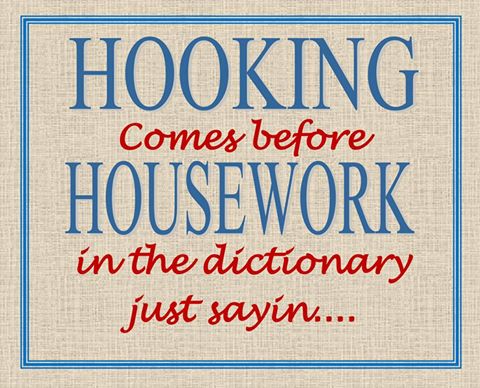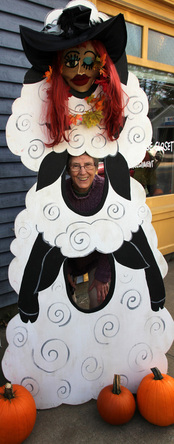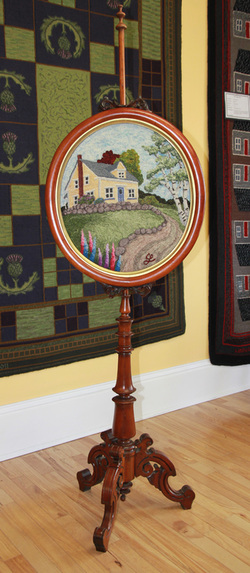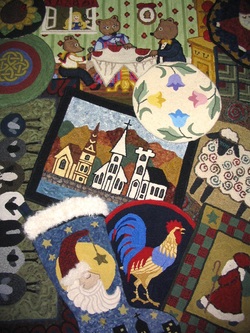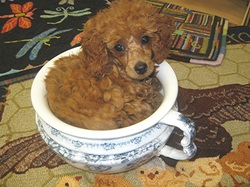So although I have this MS degree in Education, I do not easily come by these answers out of my bailiwick; so I'm a new learner here. I thought there were no "dumb questions". Five months after I took up rug hooking, I was traveling and was so excited to be in a Florence, Italy, fabric store, buying wool off bolts. These yards fit neatly into my suitcase. I returned home only to realize it was way too thin for my hooking - rolled off like silk from my cutter. That was my first bad experience with not knowing about the right kind of wool for this craft.
Now I know enough to buy from places that have it just for rug hooking. Still, I'd just like to know about the range of wools that are used and why some plaids, for instance seem to have a "high pile" is it called? While others are more compact - flat. I have loads of wooly pieces laying around here - from you, others, some passed down from my cousin who died of cancer, and others - I am sorting and wondering and wanting to learn more about wool. I am making a little rug/wool gallery for myself downstairs. Is there a book? The last time I asked about this, two ladies that taught that color planning class I was taking acted really 'defensive', and asked if I wanted to know who their suppliers were? I just think some people have experience and agendas in their past, and they just can't read me as a nice person who Just Wants to Know. So I thought of you and your blog - and how you vent sometimes - I'm venting - and that's the Thick and the Thin of it. :)
Anne Marie
Your questions are very common so I thought I would reply to you by way of a blog to share what I’ve learned over the years with all of my readers.
Wool is not the holy grail and should not be shrouded in secrecy. My philosophy is that knowledge should be shared so we can all make the best choice when purchasing fabric. Our money should not be wasted on wool that is too thin, too unstable or not conducive to this craft. A bit of education will ensure better choices, because frustration should never come into play when rug hooking!
I’m a wool snob. I only use the best and sell the best in the store. I don’t like wool that falls apart in my hands or is too thin and stringy to keep a neat surface on my rugs. That does not mean I don’t appreciate a good recycled wool because there are fine specimens to be had at second hand shops. But buyer beware because wool is not all created equal.
What most hookers desire is a 13 oz weight in their wool fabric. This means that the wool weighs 13 oz per yard. This is basically those itchy, plaid wool skirts we wore as kids. I advise newbies to carry a sample of a good 13 oz weight when perusing the flea markets and recycled clothing stores. Feel the wool you hope to buy and then rub your sample for a comparison. Sometimes the wool in the bin hasn’t been washed in hot water so take that into consideration as it will be thicker after processing in your machines. Even if the wool is unwashed it should still have the property of a winter garment, a bit of fuzz and thickness to the weave.
I like to define wool by breaking it into two categories; Winter and Summer. That does not mean winter coat weight that weighs about 16 ounces or so, as that tends to be too thick. If you want to use a coat then I would stick to all the same weight for your rug as mixing a 13 oz and a 16 oz would make your project look lumpy. Coat weight is also more difficult to pull through the backing so it is usually cut into a finer strip to reduce the stress of the harder tug.
Summer weight, is the polar opposite and not good for rug hooking at all. Here is my trick. If you spy a suit or skirt in a bargain bin or hanging on a rack, ask yourself this question. Would someone wear this garment in the summer or the winter? If you think it’s a summer piece, drop it and walk away. Summer suiting, although 100% wool is only 7 oz and won’t felt no matter how much you beat it up. It’s usually a bit shiny and stringy and although it might be the perfect colour, pass it by and save your money for the good stuff! It is also almost too thin to put through a cutting machine and slips around like a sleazy womanizer. When cutting a thin wool, you have to feed it through the machine as straight as possible or its spaghetti city. I personally don’t like my wool too thin, but have no problem using Pendleton shirts and skirts that tend to run around 10-11 oz.
Not all wools are woven or created equal. There are all kinds of weave patterns when making fabric. The best of course is the straight weave or plain weave. Plain weave produces the strongest fabric with minimal fraying. The weight of the wool and fuzziness is determined by the threads used when weaving the fabric. Think of the different ply’s of yarn. The denser the fibers used, the thicker the wool that is woven.
Some wools are woven more loosely and they won't felt enough after being washed so it needs to be cut with the wider blades, #6 to #8. Some herringbone wools are loosely woven and demand a wider cut but there are others, especially the one we buy and over-dye that can be cut very carefully in a #4. Someone told me they cut it in a #3 once for an oriental but that had to be deep concentration and a steady hand to feed it perfectly straight through the machine. Any deviation off grain would cut the fibers on the bias and therefore would degrade the integrity of the wools warp.
Back in the day when I started rug hooking I brought home a lot of wools that were later discarded. It’s a learning curve as in all things. Just because coveted coloured wool has wooed you into buying it doesn’t mean it will work. Suppress the urge by breathing deeply to allow the brain to overrule the addiction. If you succumb, and we all do at times, it can always be used as a pillow back or a liner for a Christmas stocking.
Plaids of course are fabulous, bringing texture and depth to our projets. I put them in every rug, especially herringbone….I have a big love for herringbone! Of course it's woven in a special pattern and that's the reason behind any fraying. Plaids have multiple colours going this way and that making it a bit more iffy but not enough to turn your nose up on a piece of great plaid. Just snip off the frayed ends of the loops as you go or save them all up until the rug is finished. No big deal!
Sometimes a thin plaid like a Pendleton shirt, can be felted a bit more by throwing a pair of jeans in the washer with the wool. That will knock it around and beat it up more. Front loader machines are more gentle and don’t felt as well so sidle up to a friend with a top loader and say pretty please can I use your machine?
I’m a stickler about 100% content in my wool. Nothing in my shop has a man-made fiber. I started this to protect my cutter blades because polyesters and acrylics will dull the carbon steel wheels on machines that have a pressing action such as the Bliss, Fraser 500 and Rigby designs. Cutters that offer a scissors action fare much better and in Canada we love the Bolivar Cutter, made locally and an exquisite piece of engineering. These days, I’m just a wool snob, I like the soft feel of 100% wool. I like the way it dyes, tears and cuts, and especially the way it hooks.
Cutting wool properly is the secret to a happy hooker. Taking the time to put the fabric through the machine ensures the best experience. I never put through a piece more than three inches wide. If the wool is wider and cumbersome it slides off the edge creating drag off to the side so you are continually trying to keep it in place. Over handling it creates undesired movement and off grain cutting.
It is always best to cut your strips parallel to the selvage edge which is easily apparent when you buy new wool off the bolt, but when you buy a garment at a shop, unless you have a tailor background you wouldn’t know how the pattern was cut off the bolt. Really good plain weaves work either way but a herringbone needs to be cut following the visible lines you see between the V’s in the pattern. Over time, as experience gathers under your belt, you and your wool will become one.
Here is the explanation of a few wool terms.
Selvage – When purchasing wool on the bolt or roll, the selvage is the finished edge of the fabric. It runs parallel to the grain or ‘Warp'.
Warp – The lengthwise grain that runs along the entire length of the fabric. It is the strongest grain with the least amount of movement.
Weft – This is the grain that runs the width of the fabric and has a bit of movement or stretch to it.
Bias – The bias is at a 45* degree angle on the fabric. This grain has the most stretch.
In closing, whenever you ask a question and are not satisfied with the reply or feel you are being put off, keep asking around until you get the answer you deserve. Rug hooking is not rocket science nor are we working against one another to conquer the world. Rug hooking is a glorious craft that should be filled with a lifetime of exploration, learning and sharing. That being said, I hope I’ve answered your questions and shed some light on the thick and thin of wool.
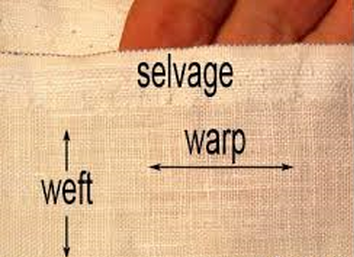
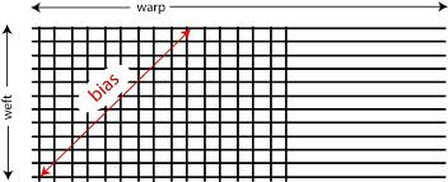


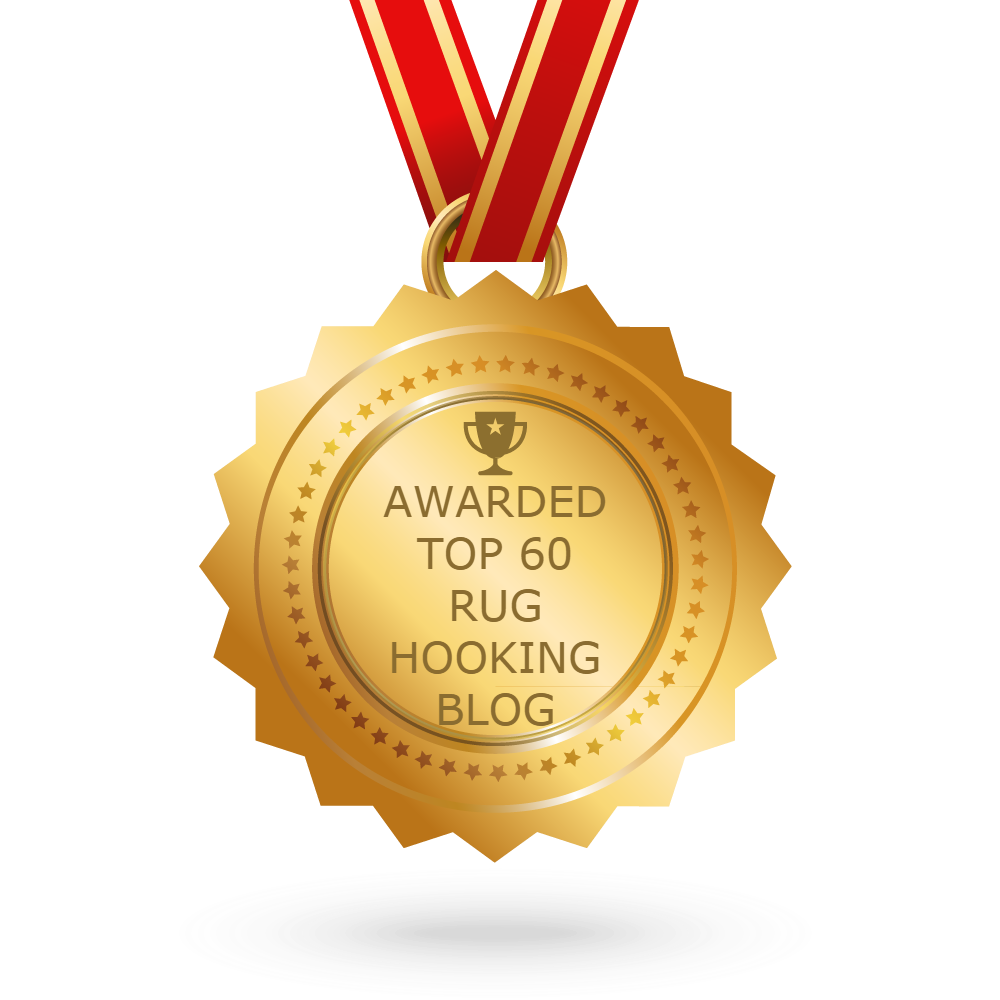
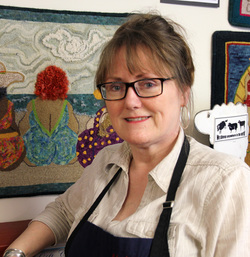
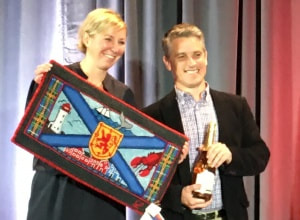
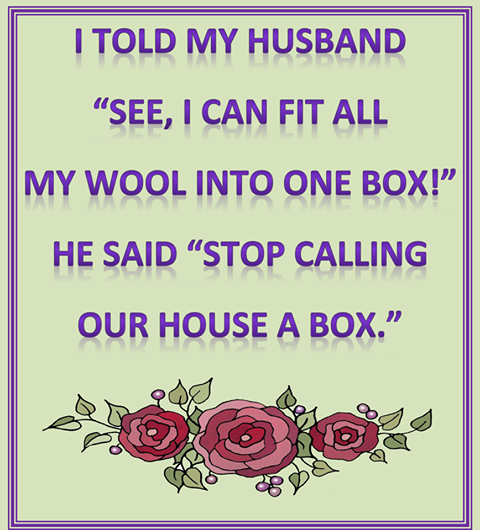
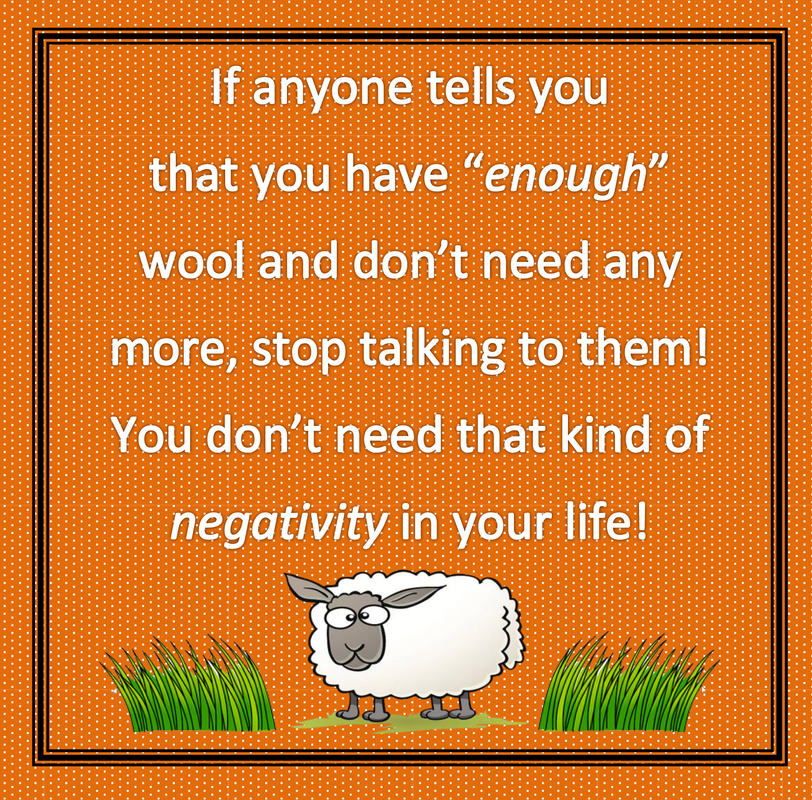
 RSS Feed
RSS Feed
